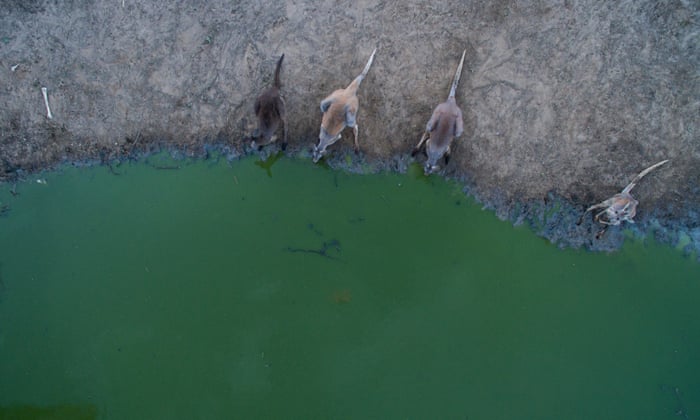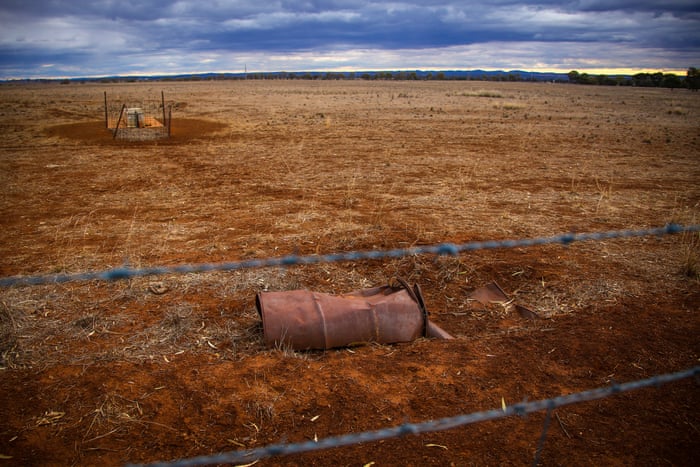Australian Outback: Drought or Bushfires
"I didn't think I'd be in this position, trying to fight for water for basic human needs in Australia."
"[We're a] tinderbox waiting to go up. It's beyond going, 'Oh, it's going to rain soon and it will get better'."
"The ecosystem is really damaged."
Fleur Magick Dennis, 40, householder, Euchareena, Australia
"People think about climate change as this very faraway prospect, but in fact, it's here now."
"It's possible that parts of Australia will become uninhabitable."
Joelle Gegis, senior lecturer, climate science, Australian National University, Canberra
"If the drought went on for another four years, that would be Armageddon for Australia."
"Nothing is sustainable without water."
James Hamilton, farmer
 |
| Kangaroos compete for the small amount of water which remains in the outfall at Lake Cawndilla near Menindee |
Mr. Hamilton's farm is 430 kilometers inland from Sydney. No crops have been planted this year. He has plans to sell off his remaining livestock. His 2,400 hectare property's reservoir is empty. His land is beyond dry. Conditions that farmers in the area have become accustomed to. Mr. Hamilton is under no illusions that business located in small towns can readily bounce back from extended drought in the face of cascading economic effects.
The prolonged drought conditions led to the catastrophic wildfires that consumed Australian bush and destroyed millions of its animals, brought ruin to towns and their inhabitants, destroyed buildings and homes, and left people reeling in disbelief at their losses. With their lives yet intact, they know they should be resilient, await new opportunities, take advantage of what has been left to them.
 |
| A drought-affected paddock on the outskirts of Dubbo, Australia in September. Photograph: David Gray/Getty Images |
For Ms. Magick Dennis, the lack of water has meant no more daily showers, neglecting her vegetable patch for want of water, and telling her four sons to just pile the dinner dishes up. The bottled water the family relies on needs to be preserved as much as possible. The reservoir in Euchareena has long since been dry and the residents no longer enjoy running water.
Over a dozen towns and villages in Australia have been left minus a reliable water source. Those impacted are left to wonder: Is life in the vast interior of Australia compatible with climate change? Rivers and lakes have been disappearing in the outback. The fears that great swaths of rural territory may have to be abandoned grips the mind.
 |
| The empty Namoi river |
It is estimated that a full quarter of humanity live in countries using almost all the water they have available, data published in the World Resources Institute pointed out in August. Places from California to Cape Town, South Africa face stark shortages. The extreme dry conditions gave fire season a leap-start this year, and towns like Euchareena have reason to dread they may not be able to stop the ignition of rogue blazes.
The dry and variable climate Australia is known for is fast becoming even drier and more unpredictable as parts of the country experience less rainfall, and floods that generally have filled rivers, lakes and dams are on the decrease according to scientists, even as the population continues to grow and increase the demand for water.
Abandoned land across New South Wales where the drought began in 2017, stretches for kilometers. In early November, rain fell finally across areas of New South Wales, giving some relief, but the drought is far from over, and whether Australia will be able to adapt is a lingering question.
 |
| Cattle feeding on a drought-affected farm near Armidale in regional New South Wales |
Labels: Australia, Climate Change, Drought

<< Home